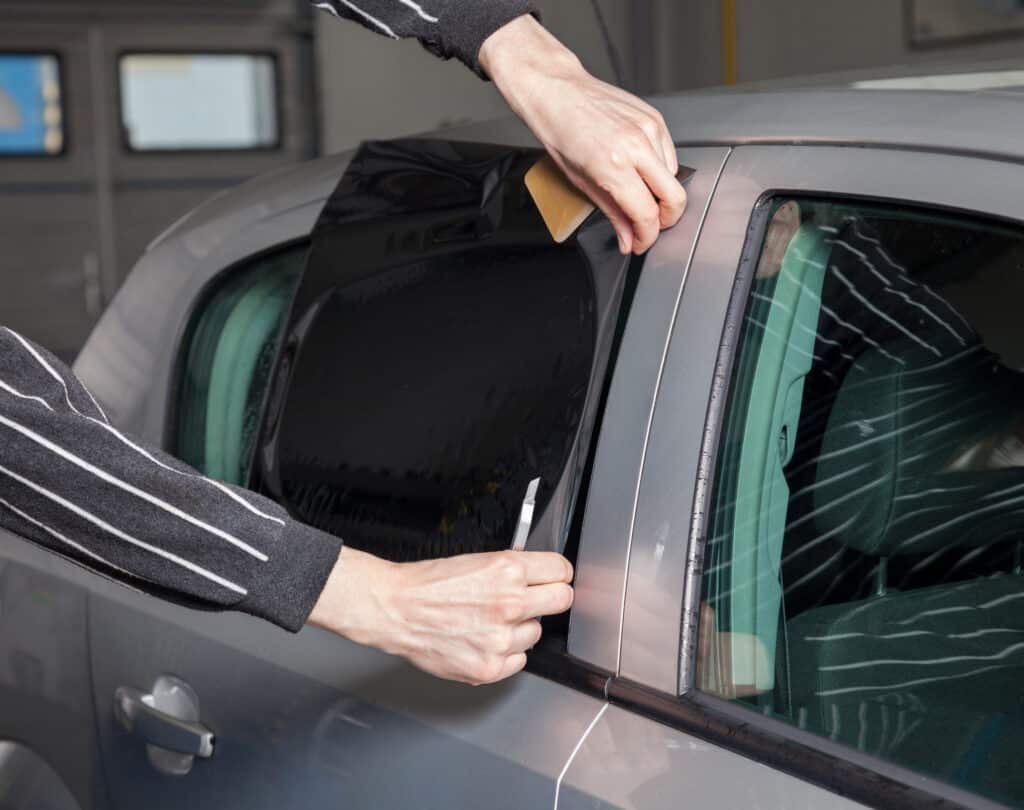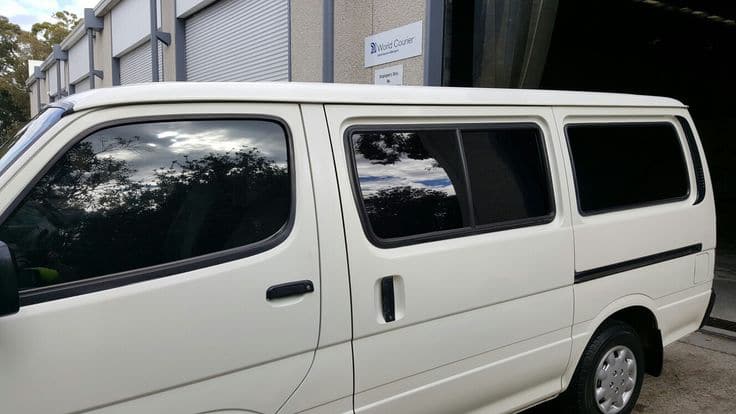There are many reasons car owners in New Hampshire want to get their windows tinted. In addition to giving the car a sharp look, tints help maintain privacy and they block sunlight, glare, heat, and a large proportion of UV rays.
Another benefit of getting your windows tinted is the safety and security that comes with it. Tinted windows offer protection against shattering in case something hits the glass. It also makes it harder to break in.
Before choosing a tint film, there are several factors to take into consideration. One important factor is the state’s tinting laws.
It is important to stay within the legal tinting limits of the state to avoid getting into trouble with law enforcement.
In this guide, we’ll tell you what these laws are and how you can go about getting your windows tinted legally in New Hampshire.
Is Window Tint Legal In New Hampshire?

New Hampshire allows window tinting for vehicles with set parameters for transparency levels. Tint laws in New Hampshire originally came into force in 1990. Since then, many amendments have been made to the law.
A bill was recently signed that raised acceptable transparency levels for tinted car windows.
The law was backed by the state’s police because of how important it is to be able to identify drivers and passengers from outside the vehicle. The law was too lenient before.
All 50 states in the United States have their own rules and regulations concerning car window tints. These rules take into consideration the type of vehicle and window placement. They also make room for certain exemptions.
Below we outline exactly what the requirements of this law are.
Permitted Window Tint Darkness

Window tint darkness levels affect visibility. This level of darkness is measured with the help of a unit called VLT or visible light transmission.
The VLT percentage will determine how much visible light can make it through the tinted window and into the car cabin.
The smaller the value of VLT, the darker the tint is. For instance, a car window with a 15% VLT tint is significantly darker than a tint with 40% VLT.
Sedans
Windshield: A non-reflective tint with 70% VLT is permitted for those with a medical waiver. The previously acceptable level was 35% VLT.
Driver-side windows: Tint darkness cannot be less than 70% VLT.
Passenger-side windows: Tint darkness can’t be less than 35% VLT.
Rear window: The permitted level of darkness must not be less than 35% VLT.
SUVs and Vans

Windshield: Non-reflective tint with 70% VLT is allowed, provided there is a medical waiver. The former law permitted 35% VLT.
Driver-side windows: More than 70% VLT is required.
Passenger-side windows: Less than 35% VLT is not permissible.
Rear window: Less than 35% VLT is not permissible.
Acceptable Tint Reflection

Applying tint film on windows bars a certain amount of light from entering the vehicle. It also reflects some of that light depending on its reflective nature.
Tint reflection differs from tint darkness. While the former bounces off visible light when it hits the surface, the latter allows only a specific percentage of light to get through.
New Hampshire does not allow the use of reflective tints.
Other New Hampshire Tint Rules You Need to Know
- Side mirrors: If a tint is applied to the rear window, it is a must for the vehicle to have dual side mirrors.
- Colored tint: There are no explicit limitations on colored tints.
- Window tint certification: There is no requirement for manufacturers to certify the tint/film.
- Certified sticker: Though recommended, it is not a requirement to have a certified sticker for the tint.
- Medical exemptions: Special permits can be issued to individuals with certain medical conditions. One must always carry the approved permit in the vehicle.
State of New Hampshire Info

Located in the northeastern New England region of the United States, the state of New Hampshire ranks as the fifth smallest state in terms of area.
This state was part of the original 13 states of the country.
New Hampshire is unique for its lack of personal income tax and general sales tax. Surrounded by granite hills, the region is a tourist attraction for its seashore and lake scenery. It is famous for its maple tree products.
Population: 1,320,718
Capital: Concord
Registered vehicles: 1,202,974
Total lane miles: 33,391
Number of highways: 3
Tint law references: New Hampshire Division of Motor Vehicles | NHPR

